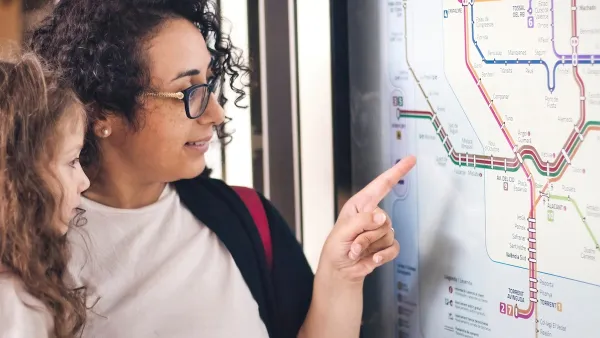A soon-to-be released medical study reveals fewer than half of children who live within a mile of their school walk or bike there, and the percentage is dropping. While safety is a factor, cultural values and number of cars in household play a role.
A new study that highlights a dramatic shift toward car commuting by kids will be published in the August issue of the American Journal of Preventive Medicine.
"The issue is important because it's linked to escalating rates of childhood obesity", observed Sarah Martin, the study's lead author, who performed the research while working at the U.S. Centers for Disease Control and Prevention.
Fewer than half of American children who live close to school regularly walk or ride a bike to classes, reports Martin.
"In 1969, about 90 percent of kids who lived within a mile of school walked or rode bikes to get there. In 2004, just 48 percent did that at least one day a week, the new study found."
"Children in the South did the least hoofing and pedaling, partly because of safety concerns, experts believe", though Martin reports cultural values played a significant role as well.
"Generally, studies have found that less educated families exercise less and have higher rates of obesity. But Martin's survey found that the children of well-educated parents were more likely to get a ride to school. She said in those families, both parents are likely to have jobs and may believe it's safer and more expedient for one of them to drive their child to school on their way to work."
"Such families likely have more cars, too. Other researchers have found that the number of cars is key to whether kids walk, said Lawrence Frank, a professor of community and regional planning at the University of British Columbia."
"More cars means less likely to walk," he said.
"Older urban communities have the most walking and biking children, at least partly because they were built with pedestrians in mind. But newer communities - like many in the South - were designed around the car, and may lack continuous sidewalks or safe crosswalks, Frank said."

Planetizen Federal Action Tracker
A weekly monitor of how Trump’s orders and actions are impacting planners and planning in America.

San Francisco's School District Spent $105M To Build Affordable Housing for Teachers — And That's Just the Beginning
SFUSD joins a growing list of school districts using their land holdings to address housing affordability challenges faced by their own employees.

Can We Please Give Communities the Design They Deserve?
Often an afterthought, graphic design impacts everything from how we navigate a city to how we feel about it. One designer argues: the people deserve better.

The EV “Charging Divide” Plaguing Rural America
With “the deck stacked” against rural areas, will the great electric American road trip ever be a reality?

Judge Halts Brooklyn Bike Lane Removal
Lawyers must prove the city was not acting “arbitrarily, capriciously, and illegally” in ordering the hasty removal.

Engineers Gave America's Roads an Almost Failing Grade — Why Aren't We Fixing Them?
With over a trillion dollars spent on roads that are still falling apart, advocates propose a new “fix it first” framework.
Urban Design for Planners 1: Software Tools
This six-course series explores essential urban design concepts using open source software and equips planners with the tools they need to participate fully in the urban design process.
Planning for Universal Design
Learn the tools for implementing Universal Design in planning regulations.
Borough of Carlisle
Smith Gee Studio
City of Camden Redevelopment Agency
City of Astoria
Transportation Research & Education Center (TREC) at Portland State University
City of Camden Redevelopment Agency
Municipality of Princeton (NJ)


























